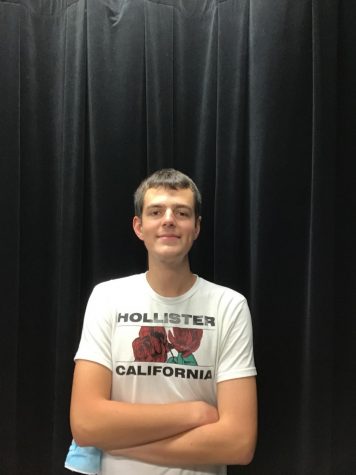Column: Students need empathy in face of mask mandate reversals
March 14, 2022
I am going to say this as bluntly as I can: This pandemic isn’t over yet.
After two years of dealing with COVID-19 and all the unpredictability regarding this disease and its many variants, we can all agree that we want this insanity to be over, right?
That being said, if you’re at school, please be respectful to others. Keep your mask on if you feel uneasy about it. Get your vaccine if you can. But remember, COVID-19 isn’t going away.
The numbers have shown how nasty it has been, even recently. At one point in January, we hit 1 million daily cases, and if it wasn’t in the millions, cases were in the hundreds of thousands on a daily basis.
Even though we have had periods of time where the pandemic dropped in cases — like right now — that doesn’t stop this virus from spreading around in new waves over time. Think back to last summer and how it seemed like we were closer than ever to the pandemic ending. It was all fine and dandy, and then when the delta variant arrived, new cases started surging up again.
Then it was the rise of the omicron variant, which sent US cases skyrocketing like we had never seen before. Even though cases have dropped drastically from what we have seen at the start of January this year, that doesn’t assure that this finally means the pandemic is starting to officially end.
So then what would we need for the COVID-19 pandemic to be “over?” What basically has to happen is that the disease must shift from a pandemic to an endemic. An endemic is when a disease has a fixed rate of infection that’s low enough to not spread beyond more than one person. That would mean the disease doesn’t have sudden spikes in infections. When variants such as Omicron and Delta mutated and spread causing surges, then that means we still have more of this pandemic to sit through until we reach a more passive level of the disease spreading.
Sure, COVID-19 doesn’t mean intense symptoms for everyone. That was true for me, and so many millions of other people around the world. When I had COVID-19, I had a slight fatigue, along with a slightly sore throat, a stuffy nose, and about 10 hours where I had lost my sense of taste. After about three days, I was completely fine.
How many people can relate to that? Probably many of you who also had it. Now, how many people have dealt with worse conditions? How many people have suffered worse conditions than just a cold? According to The Mayo Clinic, older people and those who struggle with serious medical conditions can still have lingering effects of COVID-19 for months after getting the disease. This ranges from muscle pain, chest pain, joint pain, pounding heartbeat, shortness of breath and fatigue. Even younger and generally healthy people can still struggle with these lingering symptoms, which comes to show that personally having COVID-19 can still have greater consequences, whether you are old or young, healthy or not fully.
Think about how many students lost family members and loved ones due to Covid-related complications. It is a horrifying truth for so many Elk Grove students, staff and faculty members. Even if you don’t know anyone who has personally dealt with that sort of scenario, it would not be hard to think that someone in the school has seen themselves or loved ones suffer from the virus. If you can imagine how badly it has been for some people, then you would understand that they also very likely have concerns of contracting the virus again.
Even if it wasn’t as bad for you, it would concern others if you walked around without a mask. You know, those same people who have suffered or had family members suffer from COVID-19? Besides, when’s the last time you’ve seen social distancing being practiced effectively in the past, I don’t know, several months? Also, if you’ve ever been quarantined for the virus before the CDC shortened the quarantine, you would get how inconvenient it is to be away from school, where you can’t directly do the work you’re supposed to do, and you have to hop around between emails to ask your teachers what’s to be done within like the next week.
It’s not a fun, free break; it’s dreadful and boring.
This is a virus that still has the ability to spread from one person to many others. It’s a virus that can spread without you realizing it until the symptoms appear a day or two later. COVID particles stay in the air for about three hours, and that’s often all it takes.
So, please. Be respectful to those around you who are still trying to process the last few years of this.





